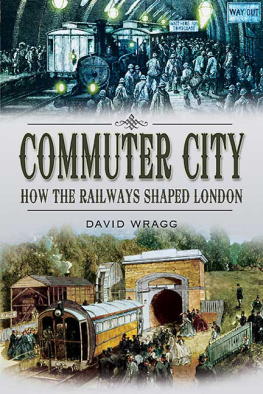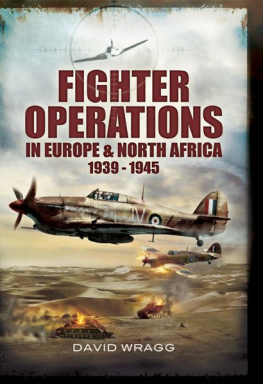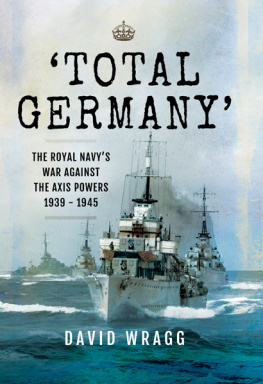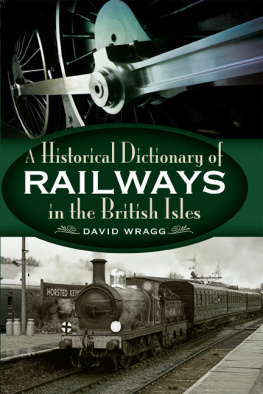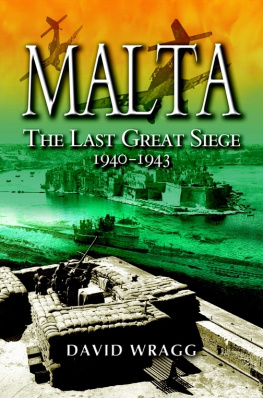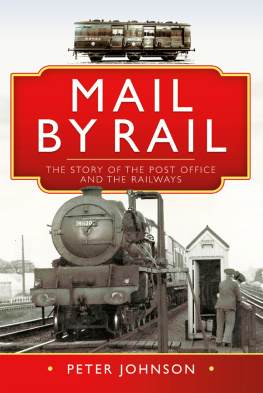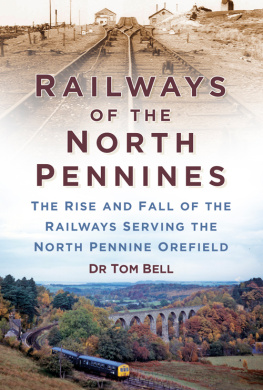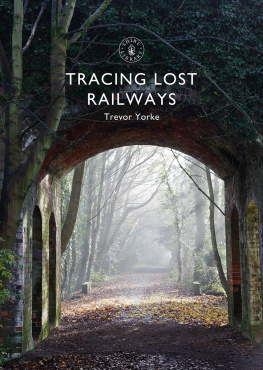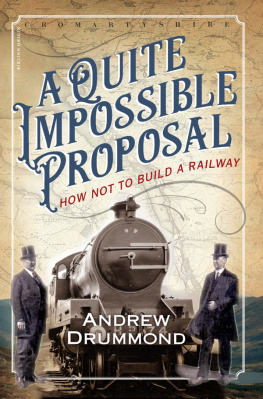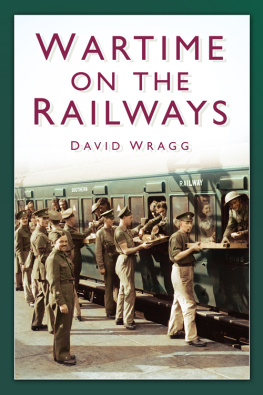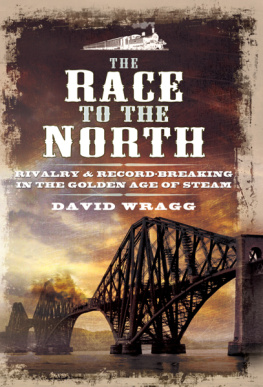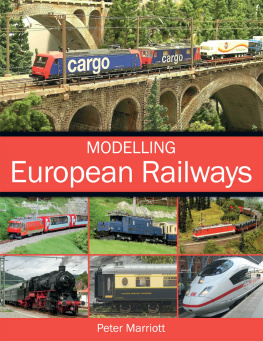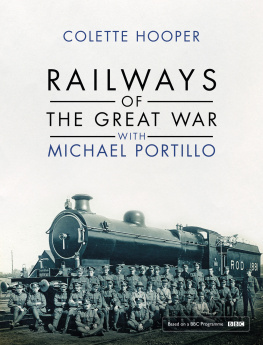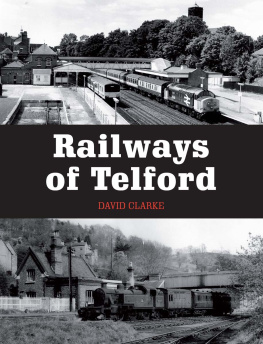

First published in Great Britain in 2010 by
Wharncliffe Local History
an imprint of
Pen & Sword Books Ltd
47 Church Street
Barnsley
South Yorkshire
S70 2AS
Copyright David Wragg, 2010
ISBN 978 1 84563 109 3
eISBN 9781844685264
The right of David Wragg to be identified as the author of this work has been asserted by him in accordance with the copyright, Designs and Patents Act 1988
A CIP catalogue record for this book is available from the British Library
All rights reserved. No part of this book may be reproduced or transmitted in any form or by any means, electronic or mechanical including photocopying, recording or by any information storage and retrieval system, without permission from the Publisher in writing.
Typeset in Ehrhardt
by S L Menzies-Earl
Printed and bound in England by
MPG Books Group
Pen & Sword Books Ltd incorporates the imprints of
Pen & Sword Aviation, Pen & Sword Maritime,
Pen & Sword Military, Wharncliffe Local History, Pen & Sword Select,
Pen & Sword Military Classics, Leo Cooper, Remember When,
Seaforth Publishing and Frontline Publishing
For a complete list of Pen & Sword titles please contact
PEN & SWORD BOOKS LIMITED
47 Church Street, Barnsley, South Yorkshire, S70 2AS, England
E-mail: enquiries@pen-and-sword.co.uk
Website: www.pen-and-sword.co.uk

An artists portrayal of horse buses at a terminus. The nearer vehicle is one of the unusual Metropolitan Saloon Omnibus Company examples. The conductors can clearly be seen attempting to give change, while the crossing sweeper is waiting for a tip. (British Transport Commission)

Severe congestion on Londons streets is nothing new, as this view of St Pauls from Fleet Street shows, with the London, Chatham & Dover train on the viaduct running to the station at Ludgate Hill. (Authors collection)

The construction of the Metropolitan Railway, now the Metropolitan Line, using the cut and cover method caused whole streets to be closed, with considerable congestion on side streets. Yet, building beneath the surface was the only way, and cut and cover was only viable if the streets were reasonably wide and straight. Even so, notice damage to the buildings on the left in lower image. (Authors collection)

There is no hint of the chaos or disruption in the set of illustrations showing the new stations for the Metropolitan Railway, and no hint of the smoke and soot that acompanied travellers in the sub-surface sections and which swelled out into the short stretches in cutting. (Authors collection)

A handbill for a London & North Western Railway excursion to the Crystal Palace, with a through train rather than changing at Euston, as would be the case today. (Authors collection)

The early City & South London Railway carriages lacked windows and were known as padded cells. (British Transport Commission)
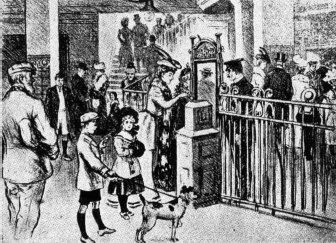
The Bakerloo & Waterloo Railway cut right across London. This shows a lady passenger who has paid 2d for her ticket surrendering at the barrier. (The Graphic)

The first railcar as such was introduced by the Great Western Railway between Slough and Windsor, but was not regarded as success by the company. The petrol engine is behind one of the driving cabs, further reducing the space for passengers. (Authors collection)
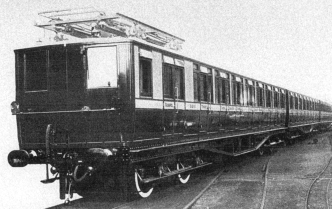
The London, Brighton & South Coast Railway favoured overhead electrification, as shown here, using the somewhat misleading term of elevated electric. The overhead was replaced in the late 1920s by the Southern Railways preferred third-rail. (Historic Model Railway Society)
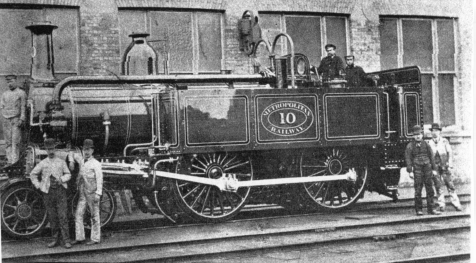
The Metropolitan Railway used steam, even though much of its central London track was below street level. Here is an A-class locomotive. (Authors collection)

The famous B-type, the first mass-produced motor bus for London, is seen here at Victoria Station. There were also single-deck versions for routes through the Blackwall Tunnel. (British Transport Commission)
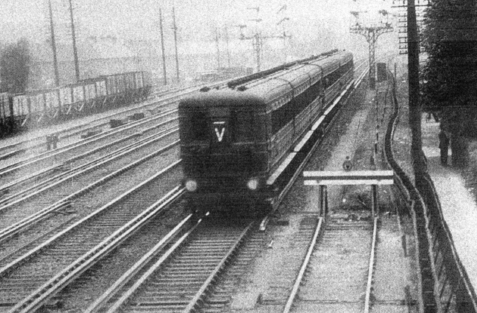
Even in 1926, before the mainline electrification started, the Southern Railway had all of the lines electrified, fast as well as slow, as can be seen here at Wimbledon. This provided flexibility in operations, and also reduced the cost of mainline electrification when this was taken to Alton and Portsmouth in 1937. (Historic Model Railway Society)
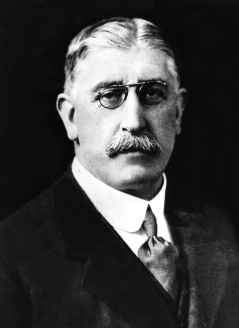
The man behind first the London & South Western electrification and then the mainline electrification of the Southern Railway was Sir Herbert Ashcombe Walker, voted the most outstanding railwayman of all time.
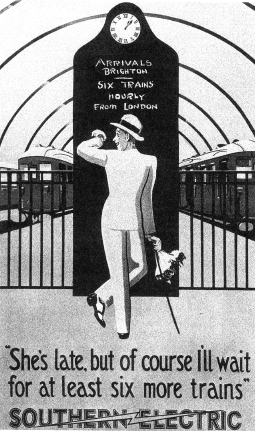
Brighton was firmly in the commuter belt by the early twentieth century, and electrification made it more attractive still, helped by frequencies that more than doubled. (Authors collection)
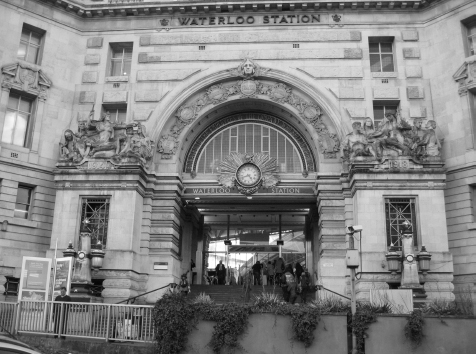
The image that so many people see of Waterloo if they arrive on foot is that of the grand entrance which accommodates war memorials to the fallen of the London & South Western Railway in the Great War, and of the Southern Railway in the Second World War. Were it not for the lines to Charing Cross on the viaduct, this splendid sight could be seen from the Thames and Waterloo Bridge. (Rupert Harding)
Next page
